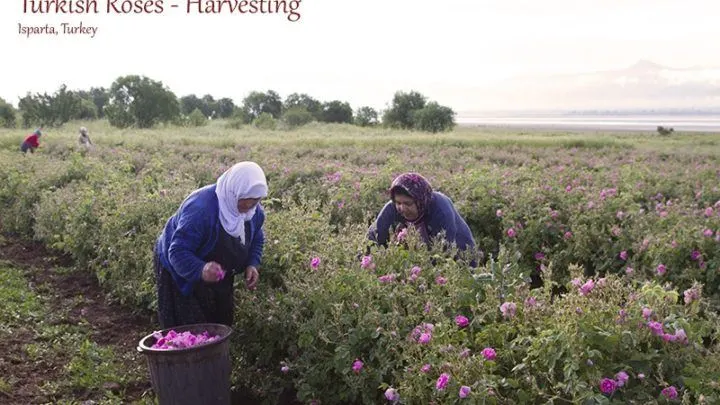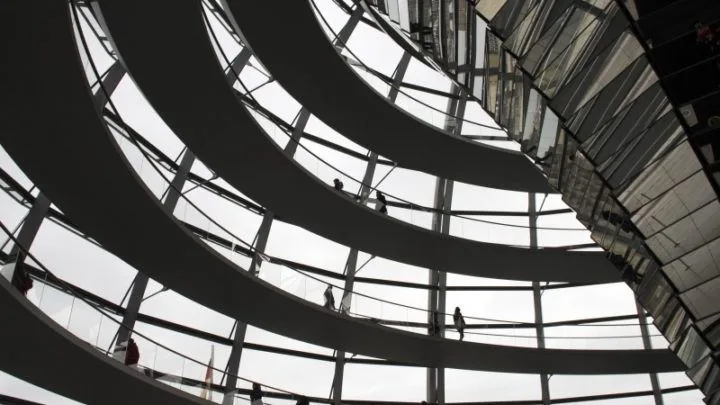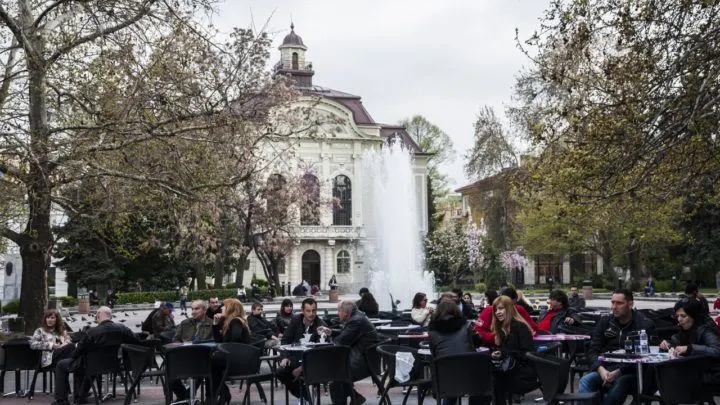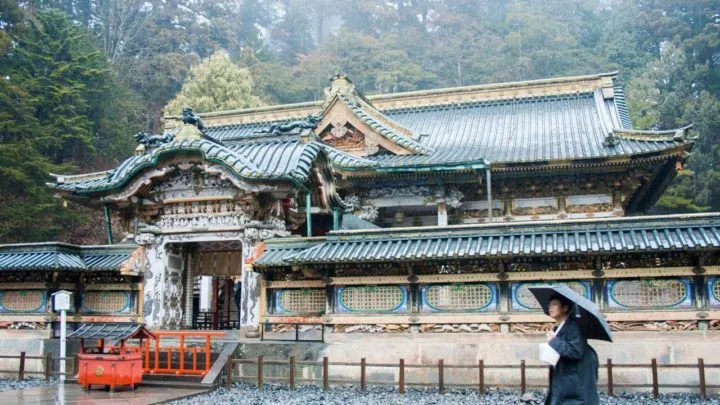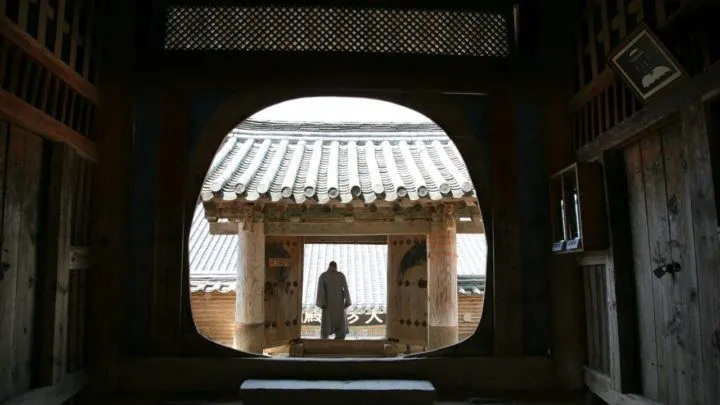Spring is the most beautiful time of year in Japan, but the best visits will need some planning. Of course, you will want to know the very best places to go in spring in Japan.
To help you plan your trip to Japan in spring, we have the following answers:
What is the Weather in Spring?
What to Pack
Are Japanese Tourist Sites Crowded?
Spring Festivals in Japan
What are the Best Places to Go?
Spring Photo Opportunities
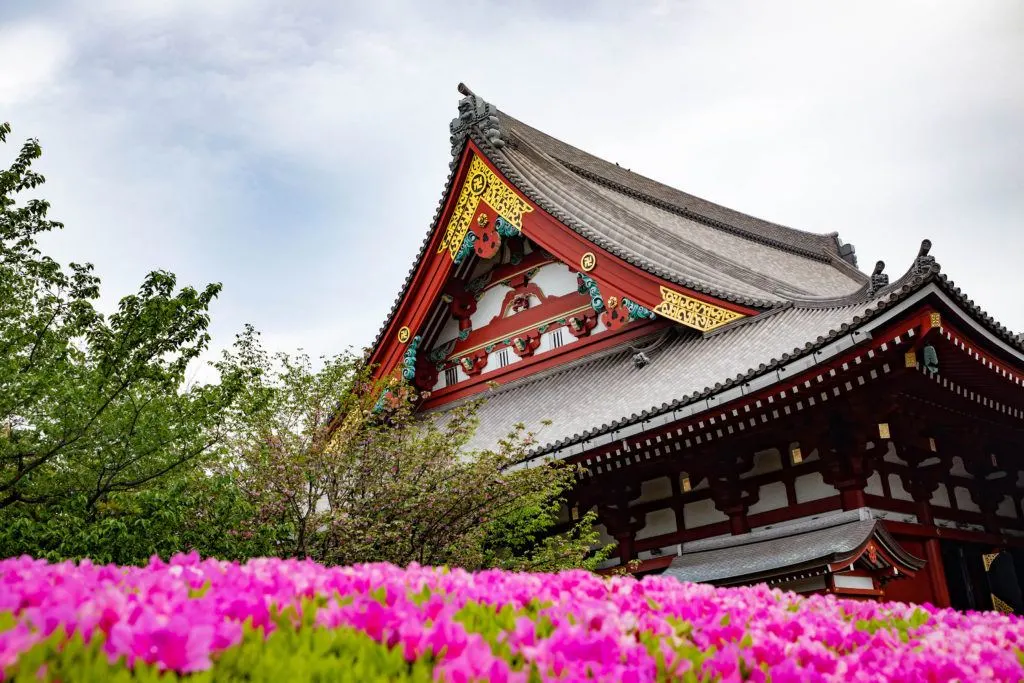
When is Spring?
Just like in many places, the spring calendar begins with March equinox and ends with Summer Solstice. That’s the calendar, but you can be sure that in a country with four season, most of your spring weather will be from March to the end of May.
Spring in Japan brings out the sun and the mild, but warmer, temperatures, perfect for being outside and doing activities like biking and hiking. You rarely need to break a sweat, yet you can enjoy all the greenery from the mountains to the sea. Luckily, it’s not quite rainy season, but of course the showers come through a little here and there, just enough to wash off the pollen.
What is the Weather in Spring?
Spring in Japan is the most comfortable time of year, and has the best weather overall. The temperatures start climbing pretty early in the year, but they don’t get too hot until summer hits. There is not too much rain, but enough to have gorgeous blooms throughout the country. I would say it’s one of the prettiest times to visit Japan.
As might be expected, March can be quite chilly. It doesn’t ever really get too cold, but if there’s a wind and some rain, it sure feels cold. Even in the mountains, where there is still snow, the temperatures are warming up and during the day, even warm.
April and May are very similar in temperature, across the board. They are resplendent with fantastic warm days and cool nights, perfect for not only doing outdoor things but lots of sightseeing.
The average rainfall around the country is about eight days, which is not too bad. As you can see in the graph, though, Sapporo gets much more than that. The rainy season doesn’t really start until June, so spring is an ideal time to enjoy some warmer temperatures without getting too wet.
Pro Tip: With the arrival of spring comes some allergies. The two most common during this time are from the cedar and cypress trees. If you think you might be allergic to them, bring your medication. Don’t worry, though, there is a pharmacy open every day in Japan. Just ask your hotelier where to go.
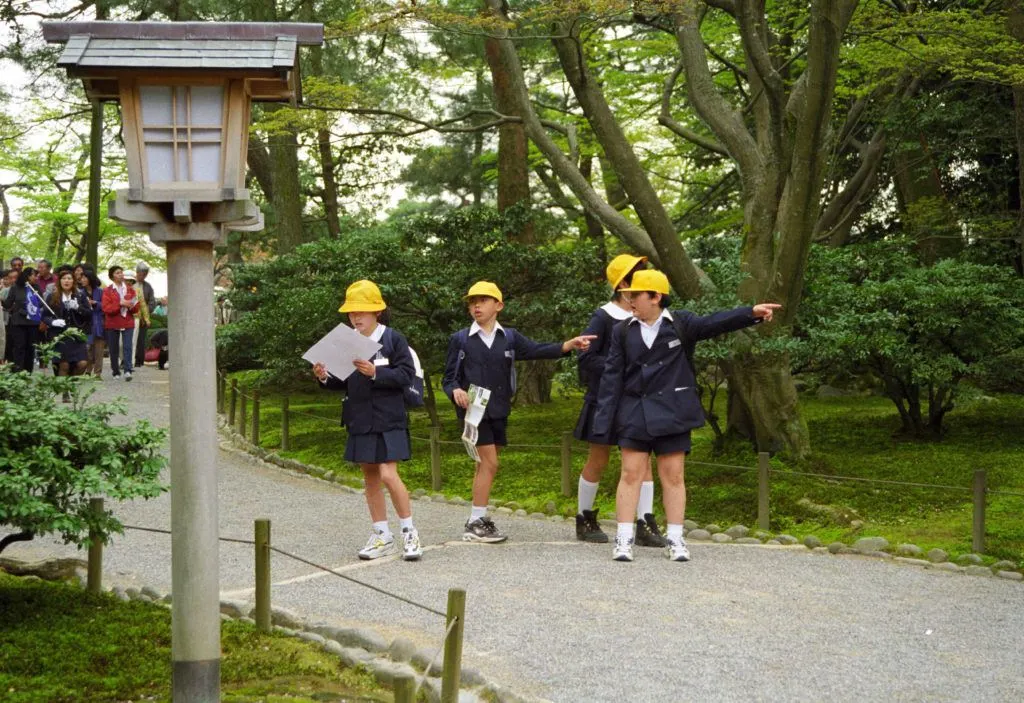
What to Pack for Spring in Japan?
The most important things to pack in spring are a compact umbrella, light jacket or fleece, and some good socks and shoes. The spring weather will get you outside, but you still want to be prepared for a rain shower. Carrying around a compact umbrella will do just that.
Also, you will want to be able to layer your clothes from t-shirt (short or long-sleeved) to a light jacket or fleece, especially in the evenings. Socks and shoes are important for keeping your feet comfortable as you walk mile after mile of sidewalks enjoying the spring weather.
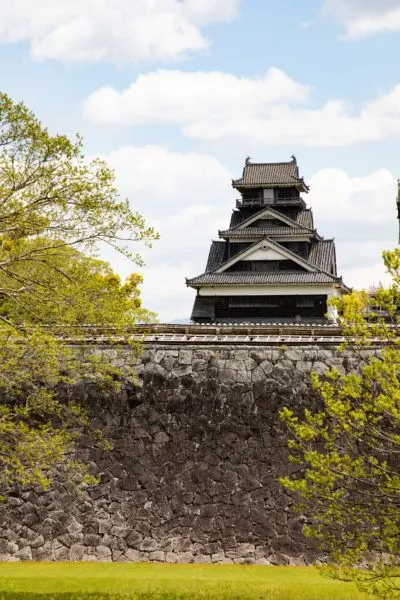
Are Japan Tourist Sites Crowded in Spring?
Naturally, the mild weather and blossoming flowers attract many visitors to most tourist spots in Japan. Local tourists as well as foreigners want to enjoy the vibrancy of spring whether they are going to wander some castle grounds, a city park, get out into the countryside, or whatever. Many, many will do it in spring. Most tourist sites will be crowded.
Here is a list of national spring holidays which would also be busier than usual.
Vernal Equinox Day – 20 March
Showa Day – 29 April
Golden Week – Last few days of April until first Saturday in May
Constitutional Memorial Day – 3 May
Greenery Day – 4 May
Children’s Day – 5 May

The red parts of the graph show when something significant is happening in that city, like a festival or cherry bloom. To use the graph effectively, think about which cities you’d like to visit and why. However, if you are hoping to see the blooms, or participate in the large cultural festivals, just know those are the times to make reservations as far in advance as possible.
As you can see from the graph, the absolute best time to visit Japan in spring to avoid large crowds would be in May, after Golden week has come to an end.
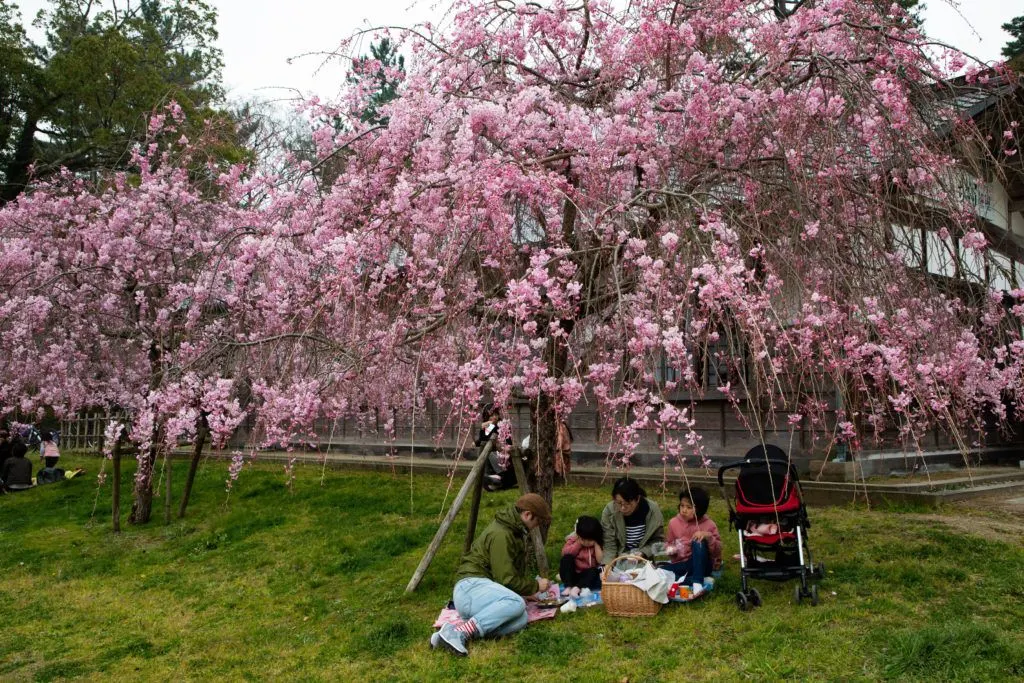
A Warning: Golden Week
One of the main reasons that spring is the most popular season and therefore has the most crowds is because of Golden Week. At the end of April through to the end of the first week in May, there are a bunch of federal holidays. During this time, some businesses will close down or downsize for the period, and all their employees will go on holiday.
Golden Week is not the time to wing it in Japan. I don’t travel during that time, because everything is busy and over-crowded and it’s near impossible to make restaurant or train reservations. However, if that is the time that you will be there, make sure to make as many reservations as you can, as soon as possible. Locals will be making reservations one year out, so it’s never too early.
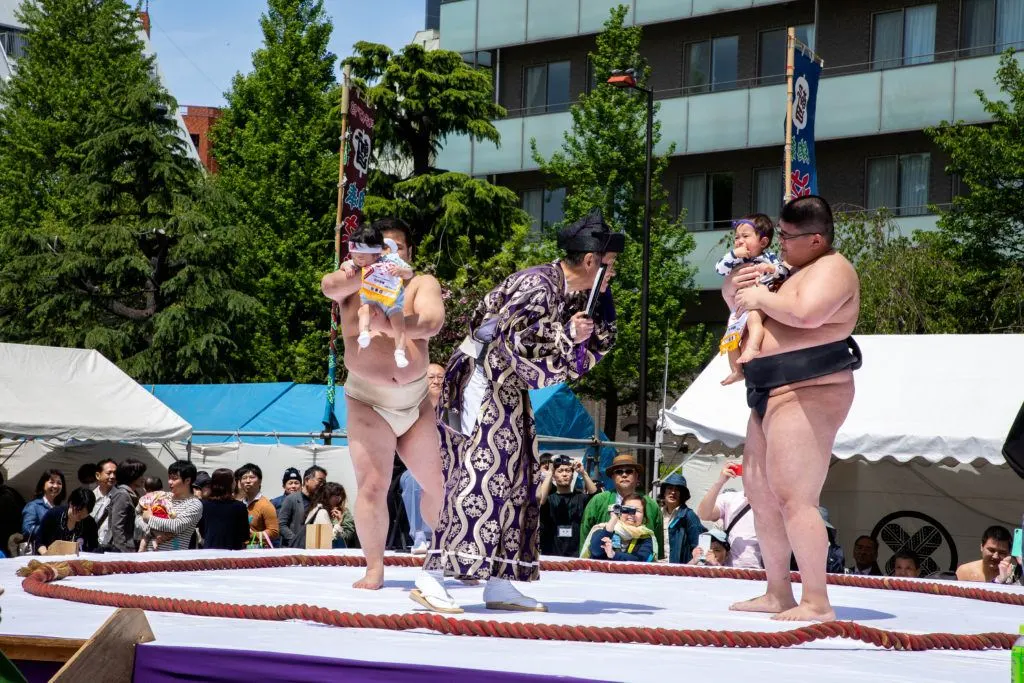
Spring Festivals in Japan
As in many places of the world, spring is a very popular time of year for festivals. The season has always been revered as a re-birth, a new beginning, so there are many rituals that have developed. Add that to the love of following the flowers, and you have the perfect recipe for a fun festival.

Here are some of the more popular festivals held during spring in Japan:
- Daruma Fair – Get your good luck for the year at this fun fest.
- Omizutori – A stunning fire festival, if you are in Nara, don’t miss it.
- Odawara Ume Matsuri – The beginning of the flower season, Odawara pops with pink plum blossoms in early spring.
- Kamakura Spring Festival – A traditional festival that highlights archers on horseback showing off their skills.

- Takayama Spring Festival – One of the biggest festivals of the year, you will see lots of mikoshi (a palanquin carried by many people).
- Yayoi in Nikko – Lots of pink flowers decorating the parade floats will put you in a very festive mood.
- Nakizumo – To predict a baby’s character, the Nakizumo (literally – baby cry) festival is a surprise and a lot of fun.
- Hirosaki Cherry Festival – One of the prettiest places to really see great cherry blossoms, Hirosaki throws quite the festival. Great food.
- Hitsuyama Shibazakura- The moss flox flowers are the star of this show, and you will love the photo ops.
- Hamamatsu Kite Festival- A weekend full of fun, the kite festival specializes in huge Japanese kites.
- Kanda Matsuri – One of the biggest festivals all year at Asakusa temple.
- Aoi Matsuri in Kyoto – one of the most important of the year, the Aoi or Hollyhock festival is a great time to see a parade to the shrine.
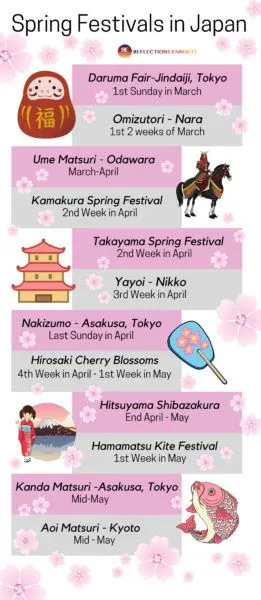
What are the Best Places to Go in Spring?
Spring in Japan is the ultimate time to get outdoors and enjoy some hiking, biking, flower viewing, as well as the cultural sightseeing this traditional country has to offer.
Here are some of the places that we suggest you go to in spring:
- Nogogiriyama
- Shimanami Kaido
- Suwa
- Tatayama Kurobe
- Okinawa
- Odawara
- Nara
- Kyoto
- Kinosaki Onsen
- Hokkaido
- Osaka
- Tokyo

Nokogiriyama
There are plenty of great hikes to do in Japan, and some like Nokogiriyama on the Boso Peninsula, are an easy day trip from Tokyo. If you get cabin fever like I do, then you’ll be itching to get out into nature by the end of February.
Nogogiriyama is famous for its Big Buddha, the Hyakushaku Kannon, and the 1500 or so small Buddhas that greet you all the way up to the top of the mountain.
The path itself, although very well marked and easy to follow, is not for the light-hearted. There are hundreds of stairs, roots, and inclines to navigate along your way. We always take our time, and we spent about three hours on the hike, which I’m sure can be done much faster if you wanted.
There’s not much in the way of restaurants on the mountain, so we recommend picking up a picnic lunch from a combini (convenience store such as 7-11) to be eaten in the shade of the cherry blossoms near the Big Buddha. It’s well worth a trip to get out and enjoy some hiking in early spring on Nogogiriyama.

Shimanami Kaido Bike Ride (near Osaka)
A great activity to do in the Spring time is the Shimanami Kaido Bike Ride between Imabari and Onomichi in the Seto Inland Sea – this area is easily accessible between Hiroshima and Osaka. After collecting our bicycles from the Sunrise Itoyama Guesthouse in Imabari and having them adjusted to suit our various sizes, we set out to complete the first 20 km of the Shiminai Kaido Cycling Route.
One of the great things about the route is that you do not need a map, it is very well sign-posted and the road grades have been built with cycling in mind so most of the hills and expressway on ramps are relatively easy to ascend. We really enjoyed travelling over the 4 km Kurushima Bridge, and seeing the fog progressively lift as the day went on.
Cycling across Oshima Island was lovely – at our slow bicycle speed it had a great combination of beautiful views and the small village feel throughout, although we could also see signs of houses having been abandoned, an issue which is prevalent across rural Japan townships. The hill in the middle of the island was a steady slog where we definitely had to rest to recover our heart-rates to normal levels, and from there we moved back onto the flatter lands before crossing the bridge to Hakata Island, our final destination.
After a great morning cycling we were happy to return our bikes and grab some well earned lunch while waiting for the bus to take us to our next destination. We definitely felt energised by the experience of travelling more slowly through such a beautiful location within Japan. The full Shimanami Kaido Cycling Route is a 80 km journey, where you should plan to take 2-3 days if you want to do the whole route from start to finish including local sightseeing. In our case we only had time to do a section of the route, so we did the first (and most scenic!) 20 km section from Imabari to Hakata as a family.
The great thing is that you can get a one way bicycle hire (make sure you get a bicycle which has 21 gears – you need them for the hills!), and there are also buses which travel regularly along the route so it is very easy to travel one way to one of the bicycle drop off points and then catch the bus the rest of the way.
There is also a same day luggage forwarding service in either direction, however your luggage can only be delivered to another hotel at either end so ensure you pre-book accommodation at each end to be able to use this service. Otherwise you can use the normal next day luggage delivery services if required.
by Anne at Japan Travel Planning
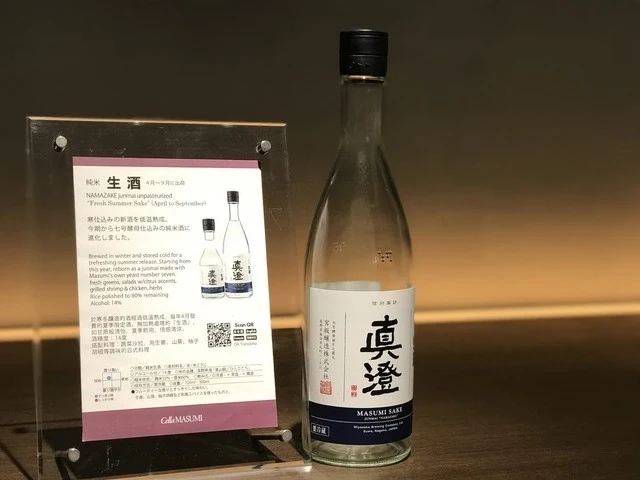
Sake Tasting in Suwa (near Matsumoto)
Sake tasting in Suwa. Suwa is a city on Japan’s Honshu Island. It sits on the shore of Lake Suwa and is in the Nagano prefecture of Japan. This ancient city nestles beautifully on the edge of Lake Suwa and is both a fascinating and tranquil place to visit. If you plan to visit Japan in spring, then you may be in for the occasional rain showers.
Looking for the best thing to do in Suwa on a rainy day? What better than to indulge in a Sake tasting tour. When in Suwa, we recommend taking a visit to the venerable Masumi Brewery. Here you will spend a couple of hours enjoying a very personal and highly informative introduction to Japanese sake.
I can guarantee it will leave you fascinated about the history of this wine and the different varieties available. After entering into the little wooden building and being given your very own sake glass (seems a bit small I agree, but take my word for it, sake is powerful stuff!), you will slowly make your way around the heavily scented tasting rooms led by a well-informed guide.
You will be offered a variety of Sake wines to taste, starting from the cheapest to the very expensive. Yes, of course, you will prefer the latter! You are under no obligation to buy the wine, you are simply there to enjoy the wine and the calmness that only a Japanese host can provide.
You will leave the building feeling warm and slightly fuzzy inside you will be glad that you now know all there is you know about Japans favourite tipple. The rain has now stopped – time to wander leisurely around the beautiful lake!
by Liz at It’s a Drama

Tateyama-Kurobe Alpine Route (near Toyama)
The Tateyama Kurobe Alpine Route, best known for its “Great Snow Wall”, is a major spring-time attraction in the Japanese Alps, often dubbed as the “Roof of Japan”. The event takes every year when the snows are cleared from the mountains, and it will continue between April and June, as any earlier and the route will be hidden beneath thick snow, and any later and it will be melted. It also coincides with Golden Week in Japan, so it can be rather busy at peak times.
The Alpine Route is more or less a string of transport that navigates the Japanese Alps starting at Toyama, where a funicular train brings you up the mountains to reach a roadway in the higher peaks of Mount Tateyama. From arrival there is then a bus route through the Alpine Forests and snowy mountain backdrops before reaching the famous Snow Wall which is a 20 meter Gorge of Snow cut into the mountain roads.
It is possible to then turn back from here, or stay for some skiing and snow sports, however I recommend continuing to follow the network of cable cars ropeways and trolley busses that climb up, over and cut through the mountains to the final attraction of the route at the Kurobe Dam.
by Allen at Live Less Ordinary
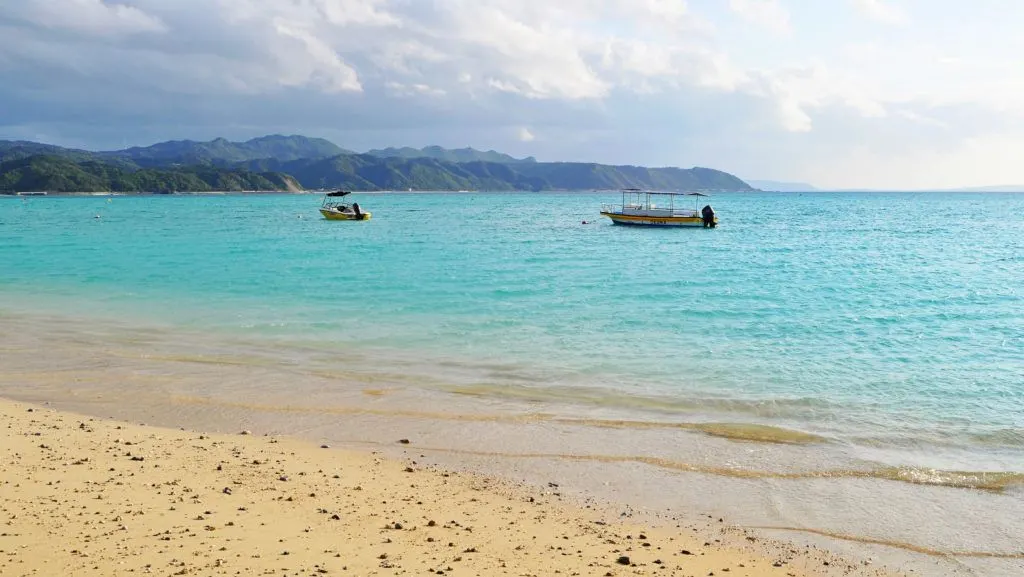
The southernmost islands in Japan get warmer earlier than Honshu, and in fact in Okinawa the weather is getting really warm and ready for swimming by the end of March. Some beaches will open at the end of March, but most will open around the first week in April.
The best beaches to head to would be Takahiki and Zumami, because that’s where you have the best chance of seeing sea turtles (they’re both an easy ferry ride away from the main island, in a chain called the Keramas Islands). Chura Sun Beach down in Naha is good in the spring also, because it’s wide and expansive so it doesn’t matter that it’s crowded because you can find good sunbathing room there.
April is the best time to visit Okinawa, because it’s warm but not a sauna. The humidity hasn’t really kicked in yet. The rainy season starts in May, and the jelly fish start turning up in July.
Swimming isn’t the only thing to do in Okinawa, you can go boating, fishing, visit the castle ruins, hiking, and just really enjoy being outside.
By Kari Frazier
Where to Go Flower Viewing in Spring
Hanami, or Flower viewing, is a major Japanese love. They look forward to it every year, and you’ll be hard-pressed not to see plenty of people out taking photos from the very first bloom until the very last falls to the ground.
Make sure to read our article on Hanami for much more information.
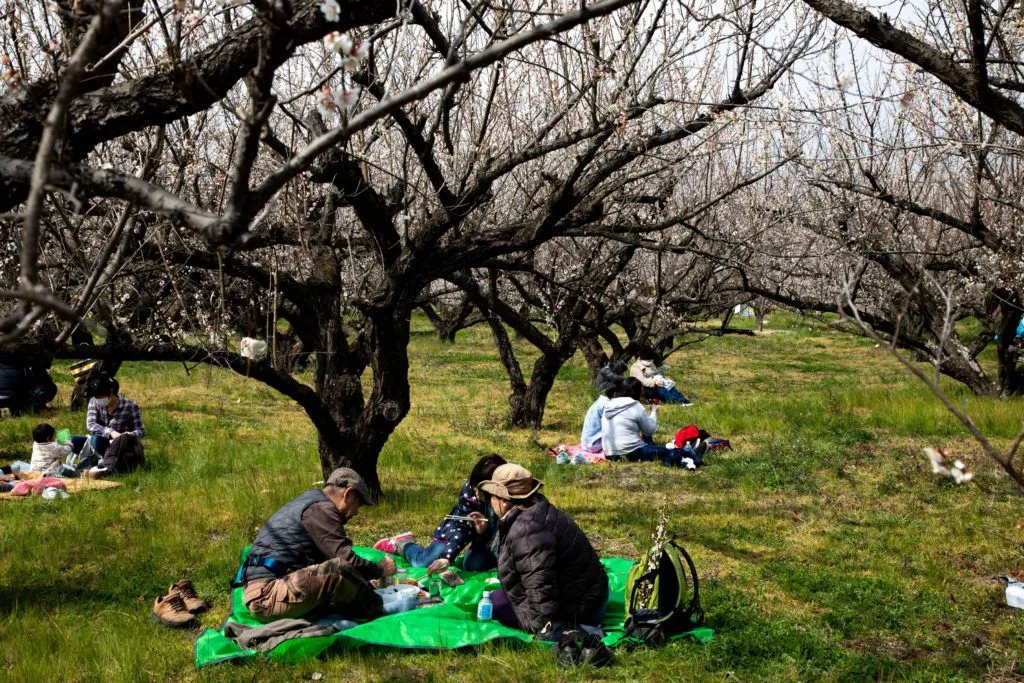
Odawara Ume Matsuri
Once winter is dried up, people start getting excited about flower season, and one of the very first flower festivals is the plum blossom in Odawara. Not even an hour from Tokyo by train, Odawara is super simple to reach, and it is the place to go in early spring.
The Odawara Plum Blossom Festival starts sometime towards the end of February or the beginning of March, depending on that year’s weather. The delicate plum blossoms are often a much deeper pink than that of the cherry, and it’s such a stark contrast to the gray and barren winter.
The orchards of Japanese plum blossoms are varied, all beautiful. My favorite it the weeping plum with its deep pink blooms. After meandering the trees, there is a lane where the main part of the festival is.
There you can try all kinds of plum products, view artwork, and have some great street food, then buy a few souvenirs. It’s a great day out, and one you won’t want to miss.
The festival lasts a few weeks, so there’s plenty of time to get there. Of course it is much more crowded on the weekend, and if you go then go super early in order to get parking if you are driving. Probably the best way to go is by train and then bus or taxi. It’s much easier than driving.
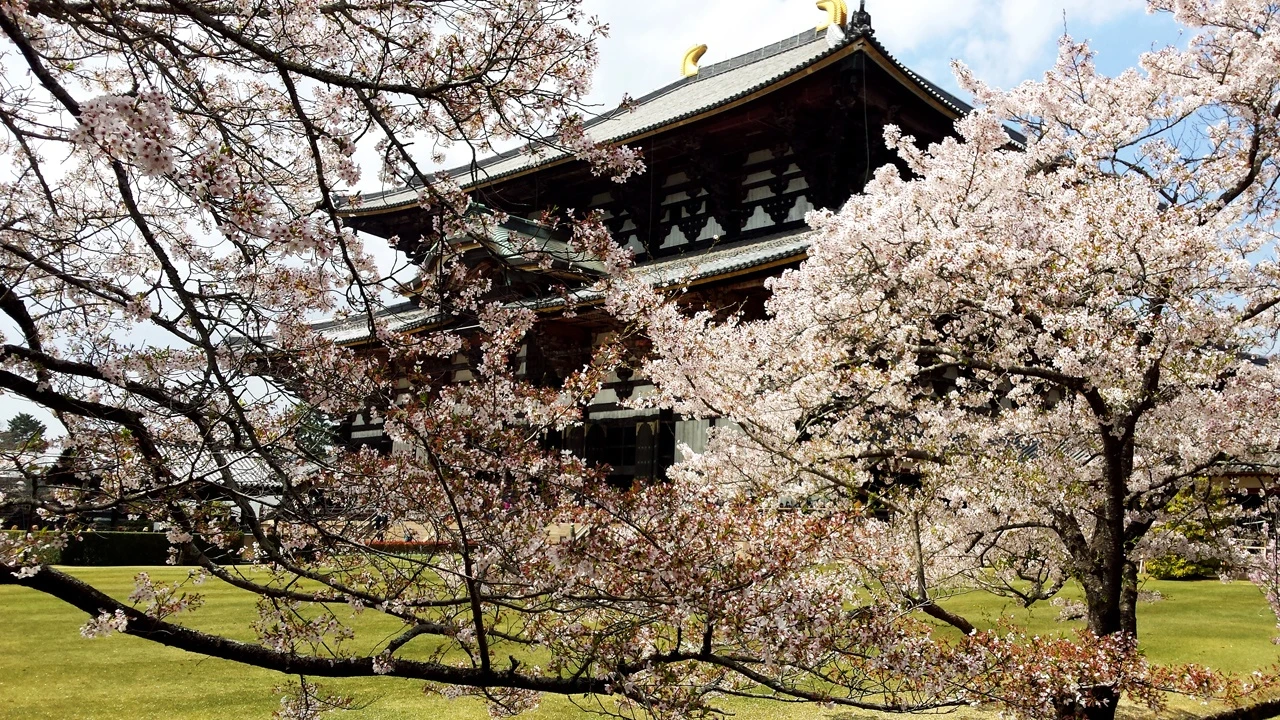
Nara’s Cherry Blossoms
Imagine a soft breeze on the first warm day of spring. Everything is quiet as you gaze upon an ancient temple and pink cherry blossoms flutter through the air like tiny butterflies. This is Nara at its best.
Nara is a popular destination and you won’t have it to yourself, but there are moments when the crowds clear at Todai-Ji that allow you to experience the serenity that must have been felt when this temple was first constructed. The giant Buddha will fill you with awe and contribute to overall peaceful setting at Todai-Ji.
If you’re looking for a bit of excitement to spice up the tranquillity of the place, try your luck squeezing through the Buddha’s Nostril. You can’t miss this pillar that will have people lining up to see if they can squeeze their bodies through small hole.
Supposedly, anyone who can get through is guaranteed enlightenment…I don’t know about that (I made it through and don’t feel any wiser for it), but it’s still fun. When you’re ready for more beautiful cherry blossoms, take your lunch over to Nara Park.
Here, you can find a quiet space under a cherry tree while you watch the famous deer frolic about. These deer were once considered sacred beings (now they have been demoted to national treasures, but that’s still pretty sacred if you ask me). Seeing them sleep, eat, run, and play amidst cherry blossoms only adds to the magic.
Japan is full of excitement, weirdness, and awesome things to do. Nara in the springtime is a chance to experience the softer side of Japan.
by Jennifer at The Rainbow Route
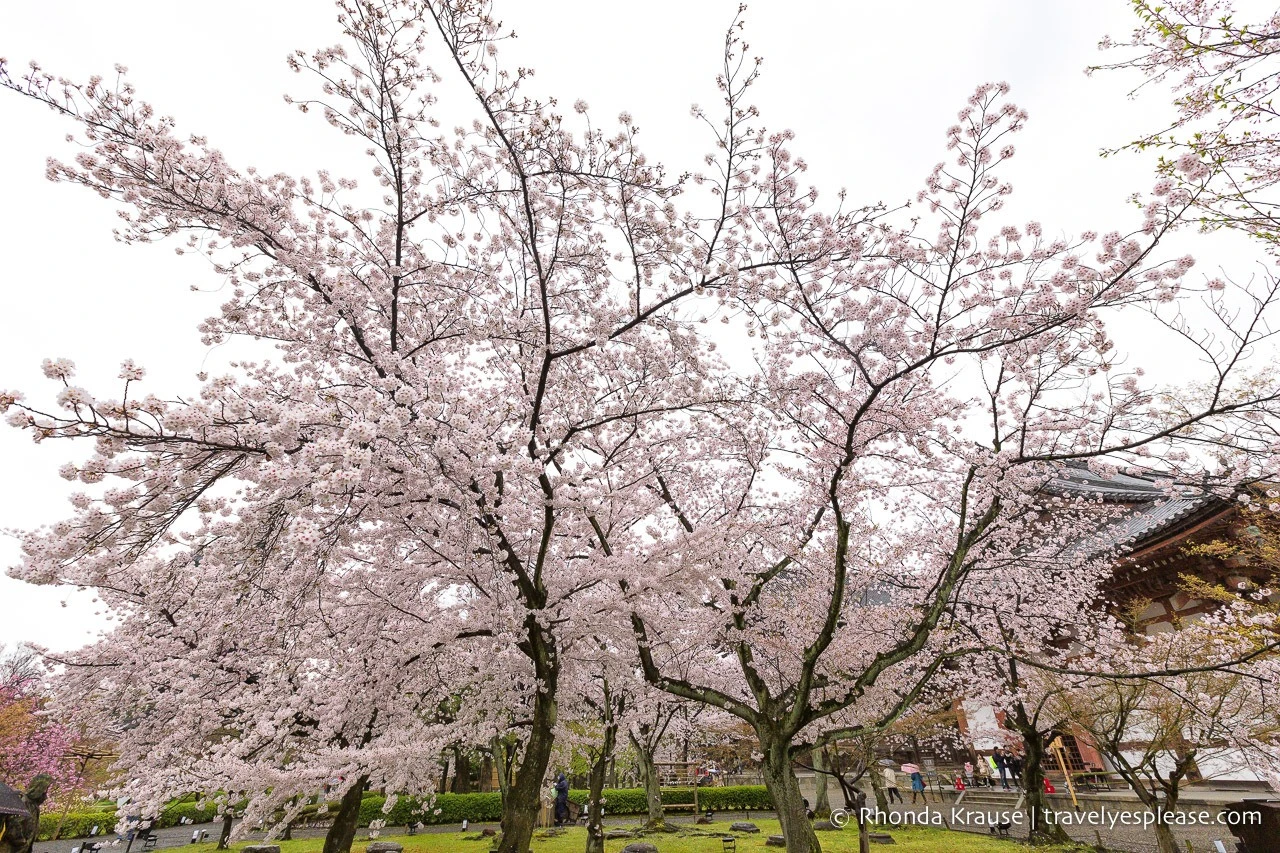
Kyoto
A fantastic way to enjoy spring in Japan is to go cherry blossom viewing in Kyoto. This historic city not only has plenty of blossom viewing locations, but it welcomes in the season with great fanfare. Throughout Kyoto, visitors can see hanami parties (blossom viewing parties) in action. People lay down tarps or blankets and gather under cherry trees for picnics.
A popular place for hanami parties in Kyoto is Maruyama Park. It’s a festival like atmosphere with locals coming dressed in their finest traditional clothing to have photos taken under the large weeping cherry tree and enjoy snacks from the food stalls.
A tasty way to enjoy spring in Japan is by indulging in the cherry blossom flavoured treats, like sakura soft ice cream, that are popular this time of year. These pink delicacies are a delicious way to reenergize after visiting Kyoto’s many cherry blossom locations.
Some great sakura walks in Kyoto are along the Philosopher’s Path, Shimbashi Street, and the Hozu River in Arashiyama. Even at night, some cherry trees around the city are festively illuminated by floodlights so they can be admired after dark. Night or day, Kyoto is a wonderful place to enjoy the Japanese tradition of cherry blossom viewing.
by Rhonda at Travel? Yes Please!
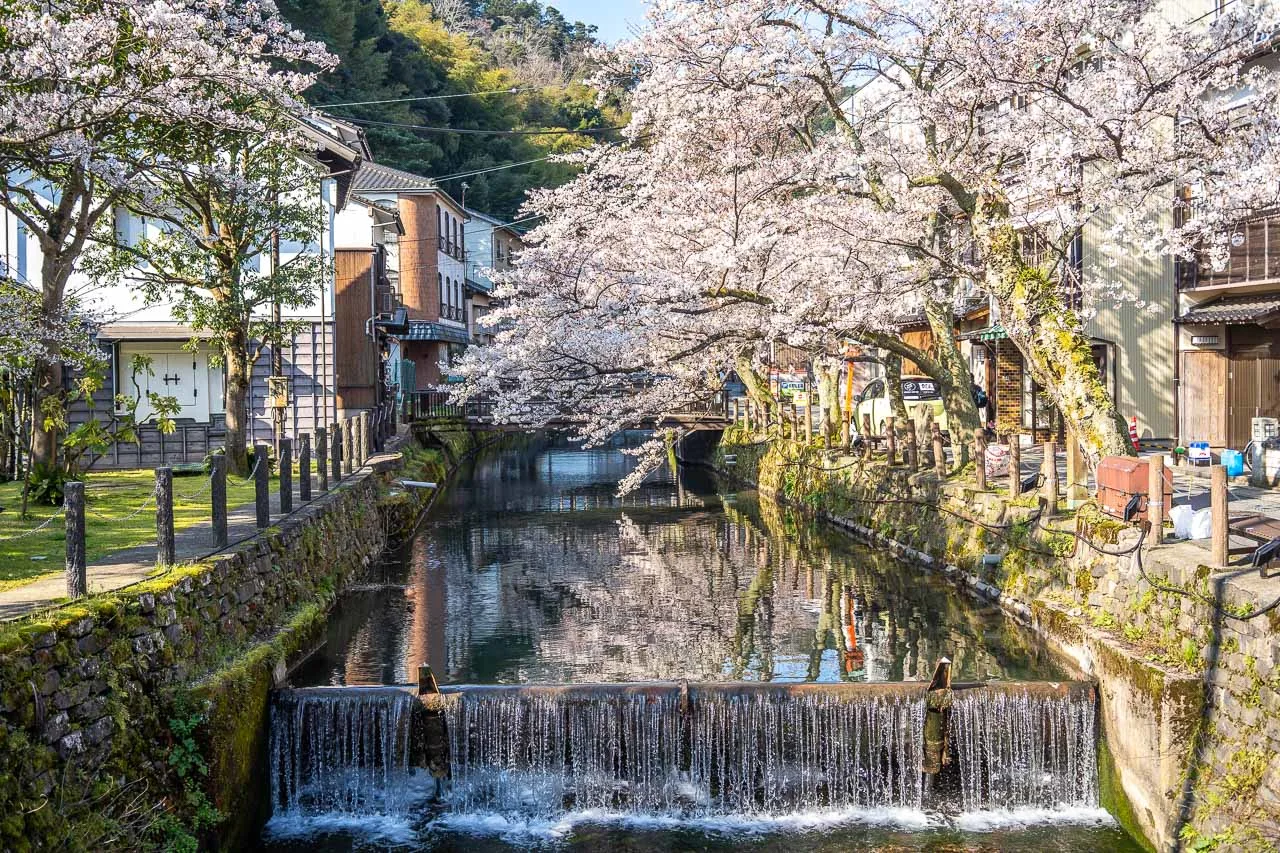
Kinosaki Onsen (near Kyoto)
Kinosaki Onsen is a hot spring resort town just 2.5 hours by train from Kyoto or Osaka, and it’s a great spring destination. Onsen towns are a unique Japanese experience and are where locals come to relax. You stay in a ryokan (traditional inn), sleep on a futon in a tatami mat room, and enjoy delicious multi-course meals served in your room.
After putting on the provided yukata (cotton kimono) and geta (wooden sandals), you head out into the streets to hop from one onsen (hot spring bath) to another and soak in the steaming waters. Kinosaki Onsen has seven public onsen which are all included in the free pass you get with your accommodation.
Your hotel might also have a private onsen available for mixed gender use (ideal if travelling with family or a partner of the opposite sex). You’ll need to be aware of onsen etiquette (you must be completely naked and shower thoroughly before getting in the bath), but once you get over any initial apprehension, it’s a very relaxing experience. Some of the onsen have multiple baths (and even saunas) to enjoy and many have garden views.
Spring (usually early April) is a lovely time to visit Kinosaki as the cherry blossoms are in bloom along the pretty canals and it’s still cool enough to appreciate the hot spring baths. It’s also much less busy than Kyoto, so you can enjoy the blossoms without fighting crowds.
by Erin at Never Ending Voyage
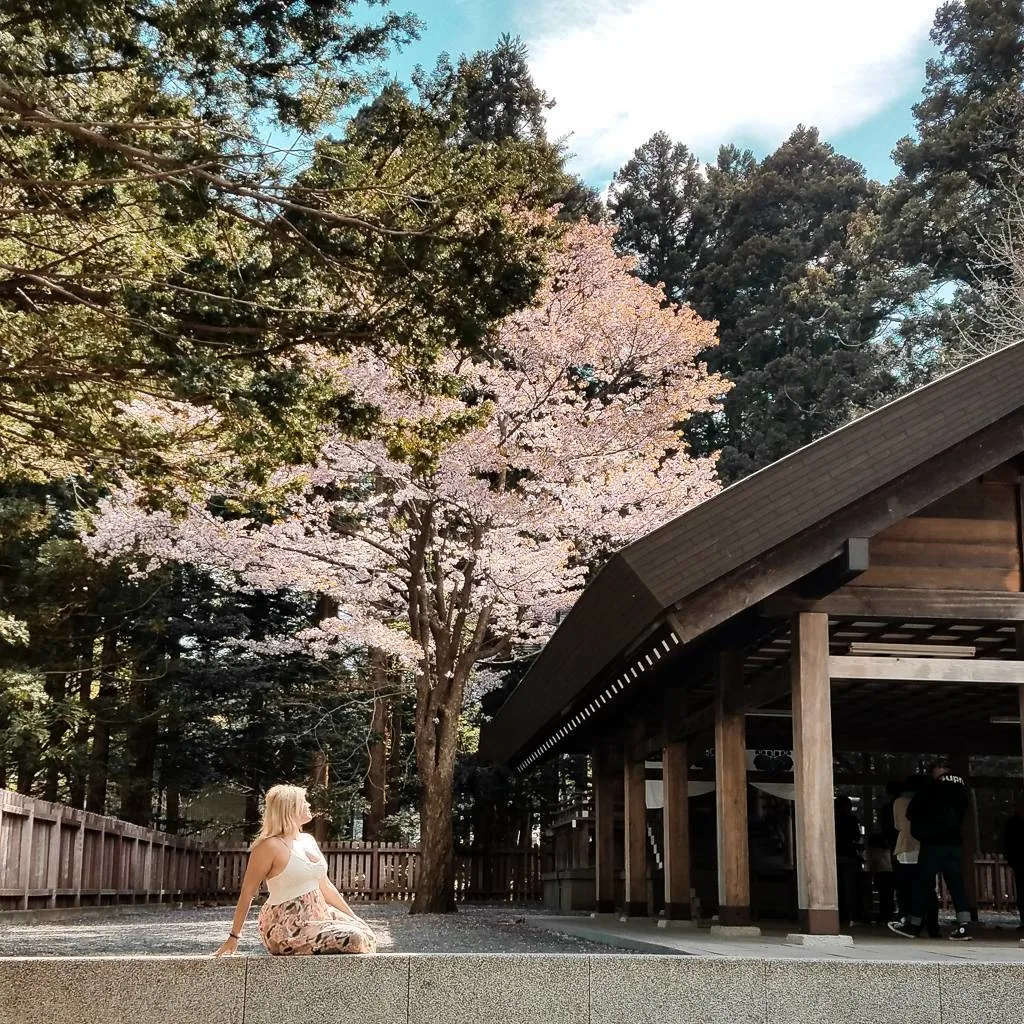
Hokkaido
When people think about Japanese spring and seeing the cherry blossoms in Japan they mostly focus on cities like Kyoto. However, if you are a bit late for the cherry blossom season, don’t worry, just go up to Hokkaido, in the north, and you can still see it up to a month later than in Kyoto (May)!
A perfect place to see the cherry blossoms is Maruyama Park in Sapporo. In fact, this park was modeled after an equally named park in Kyoto. Maruyama Park is huge, almost 70 hectares and lies at the foot of Mt. Maruyama. It’s popular for its rich virgin forest where there are lots of wild animals, including some incredibly cute squirrels.
Don’t worry, they won’t steal your lunch – in fact, one of the best ways to explore Maruyama Park during cherry blossom season is to bring along a picnic! You will see many locals do the same. In order to get to the park, just take the Tozai metro line to Maruyama-Koen – it is less than five minutes walking from there to the entrance of the park! Admission to the park is free – in fact, there are no gates or anything like that!
I hope, you will enjoy this secret stop as much as I did! Not only is Maruyama loved by locals for its stunning cherry blossom trees, it is also home to one of the most important Shinto shrines in Japan, the Hokkaido-Jingu Shrine. When you visit, you won’t want to miss it!
by Sarah at Fernweh Sarah
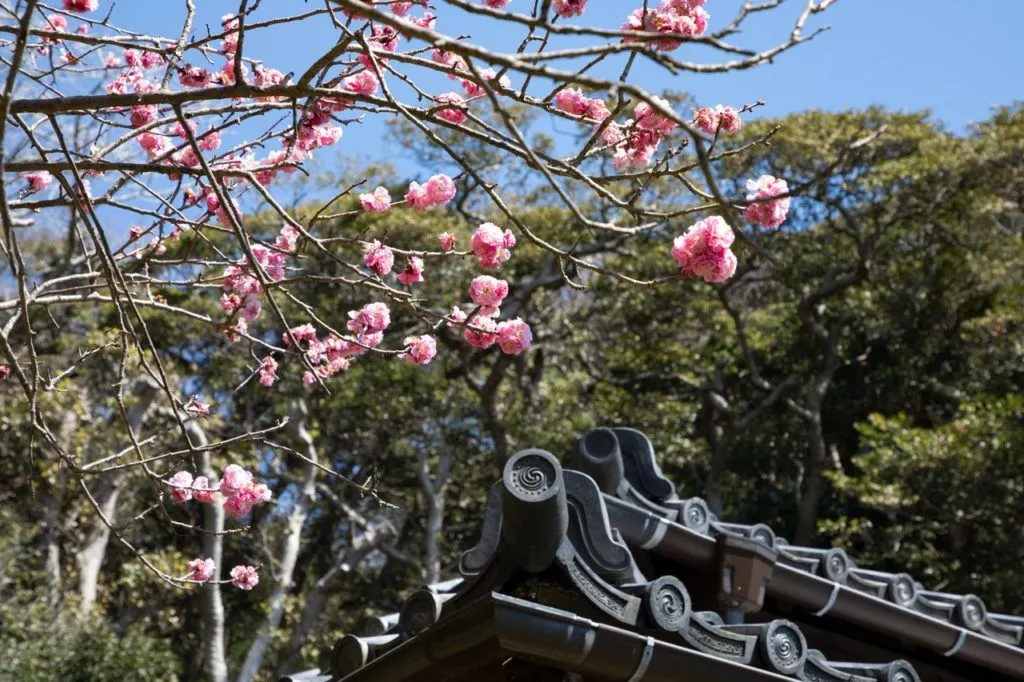
Osaka
My favorite place in Japan to see cherry blossoms in spring is Shukugawa near Osaka. Shukugawa River runs through Shukugawa Park where over 1,700 cherry trees line both sides of the river, draping prettily over the edges into the water. They also run parallel to the riverside trees, forming a spectacular tunnel of flowers.
When some petals have fallen, creating a rosy carpet, you are surrounded below, beside and above by pink cherry blossoms. It’s stunning. This park is not on the regular tourist trail, but it is most definitely a popular spot with locals, and in fact made it on the list of the top 100 spots in Japan to see cherry blossoms. People spread blue tarpaulins under the trees early in the morning to stake a claim for their friends, family or coworkers.
The thing to do when cherry trees bloom is to have a hanami – a picnic under the trees – so rows of stalls set up nearby selling obento lunch boxes, sake, beer, noodles, toys and more. It’s incredibly festive way to enjoy the spring blooms. Shukugawa Park is on the Kobe JR line about 10 minutes from Umeda station in Osaka. So, hop on the train, gran a sake or beer, spread out your tarpaulin or blanket and enjoy the spring cherry blossoms alongside dozens of local Japanese people.
by James at Travel Collecting
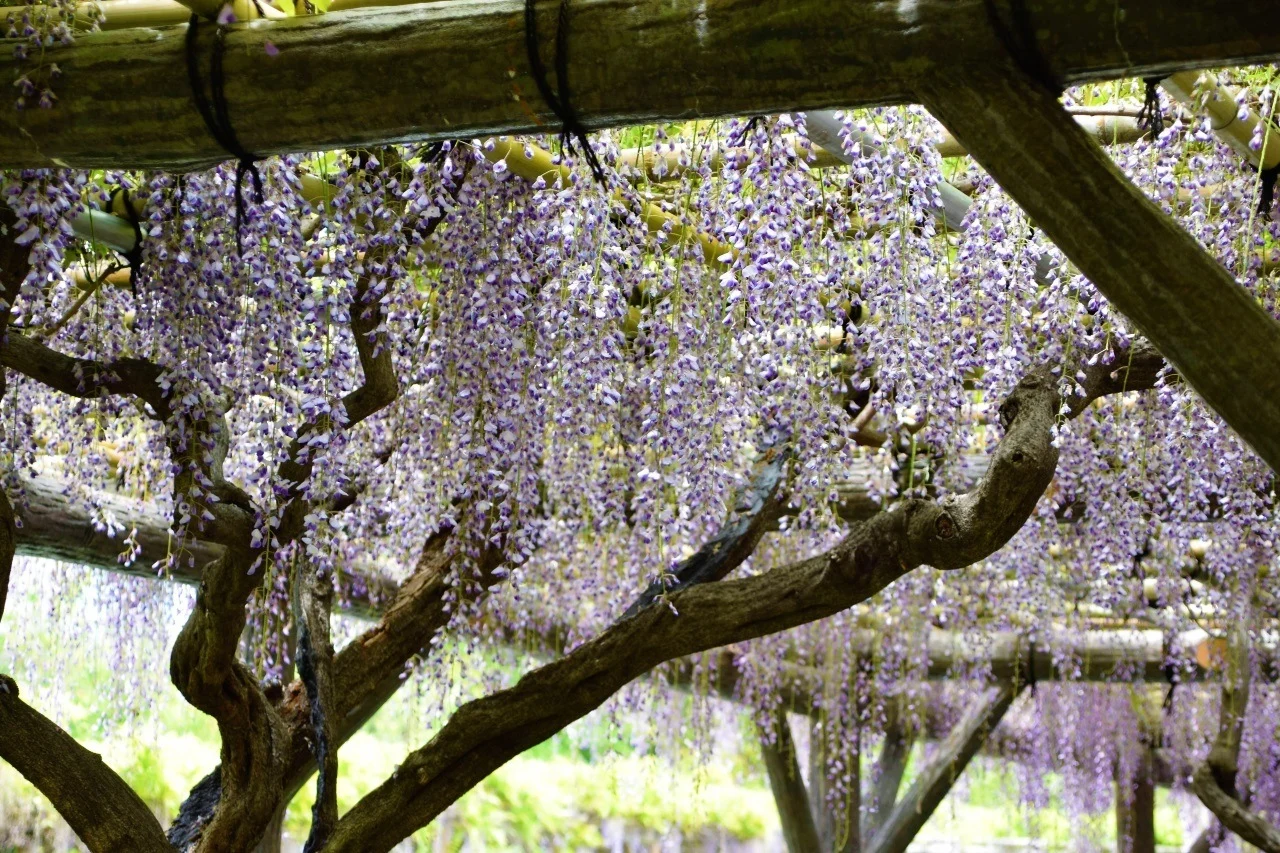
Wisteria Festival at the Kameido Tenjin Shrine (Tokyo)
If you are visiting Tokyo during the spring, make sure you include Kameido Tenjin Shrine in your Japan itinerary. From mid-April to early May it hosts a famous wisteria festival, as its hundreds of wisteria trees bloom and the delicate lilac flowers descend from trellised tunnels.
Japan has more than 20 native species of wisteria and this is one of the city’s best spots for seeing them bloom in spectacular style. The dates of the festival coincide with the Golden Week national holidays, so I would recommend going early to avoid the crowds who are drawn here. Entrance is free and the gardens are open 24 hours a day, and sometimes beautifully lit up at night.
The shrine is located 15 minutes’ walk from Kameido Station, off Kameido Tenjin-dori Avenue, and its side streets are lined with stalls offering freshly prepared food. The recently restored shrine was founded in 1646 and its attractive gardens, which have inspired artists, are also filled with plum trees, turtle ponds and an iconic red arched bridge.
Sitting in front of the ornate temple is a bronze statue of a cow, symbolic in the Tenjin faith, which you can touch and stroke for good luck. From the shrine you have a fantastic view of the Tokyo Skytree tower, which you can visit afterwards as it is only a short walk away.
by Claire at Backpacking Bella
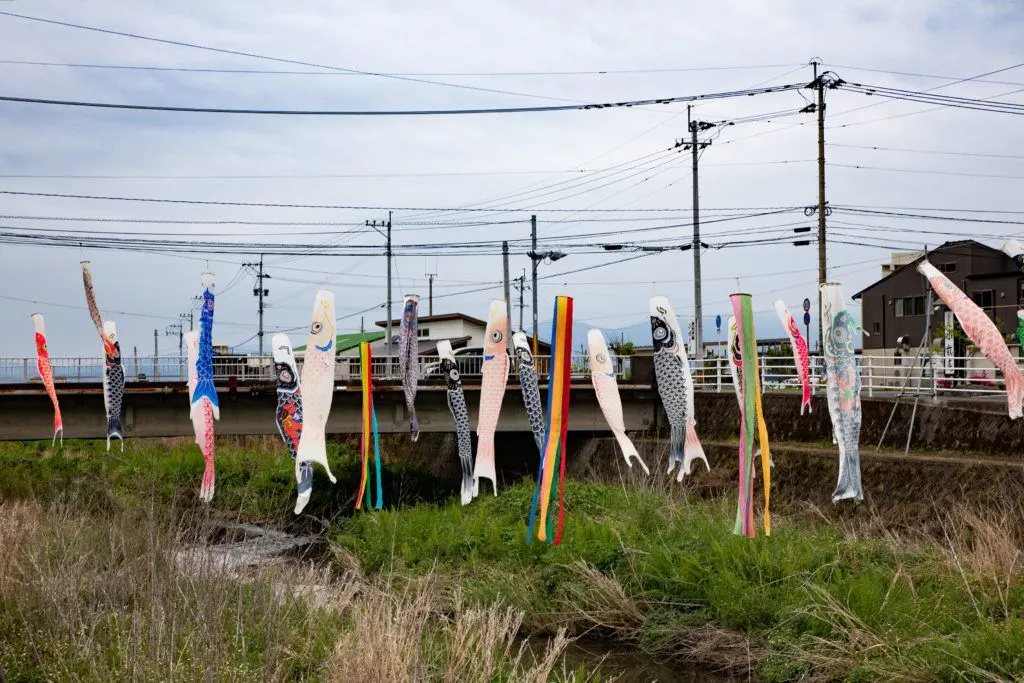
Spring Photo Opportunities
There are many significant things happening during spring that will make you snap away with your camera. Some things that you’ll want to capture include:
- Of course the multitude of flowers that bloom continually throughout the season. It’s not just the flowers you can snap, but the people, and even dogs get into the act.
- Girl’s Day is March 3rd, and if you go to a shrine, you will probably see many little girls in traditional kimono.
- Schoolchildren with their new uniforms and backpacks as they begin a new school year in April.
- Spring planting of the rice. There are many places in the country that celebrate it.
- May 5th is Boy’s Day and kites are flown all over the country. It’s also another time to visit a shrine and see them receive their blessings.

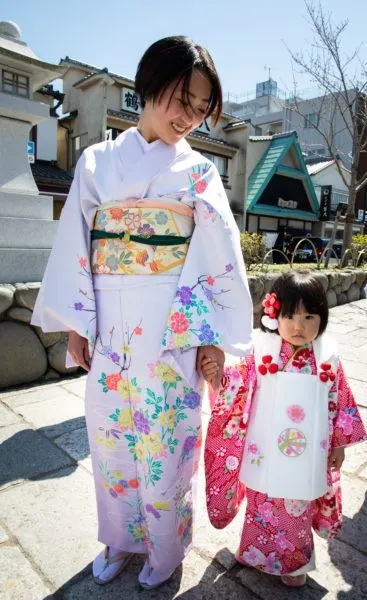
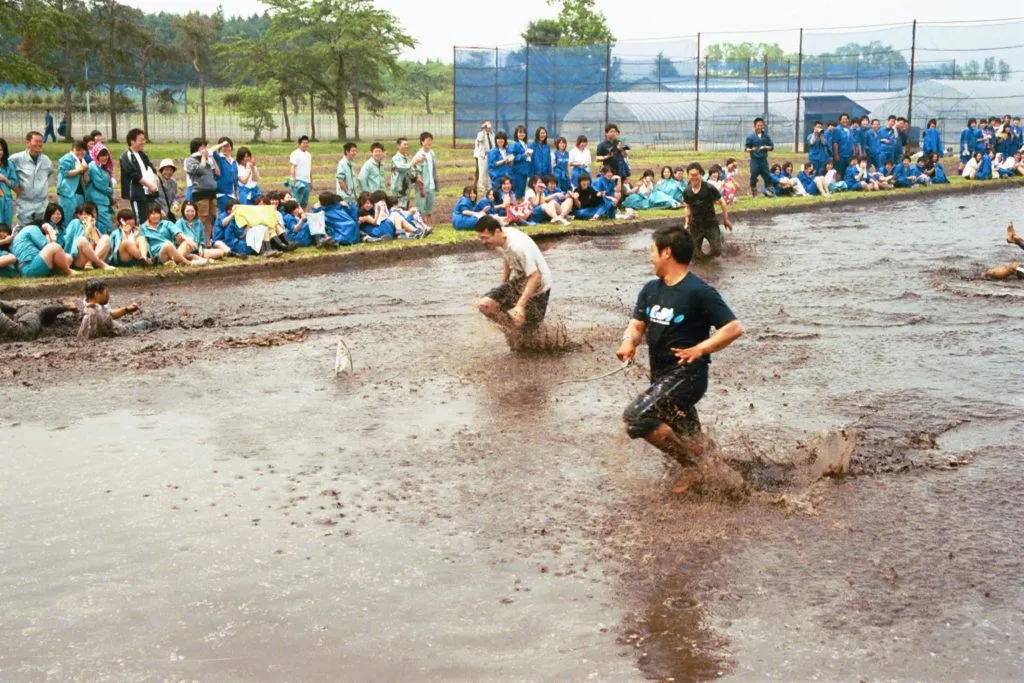
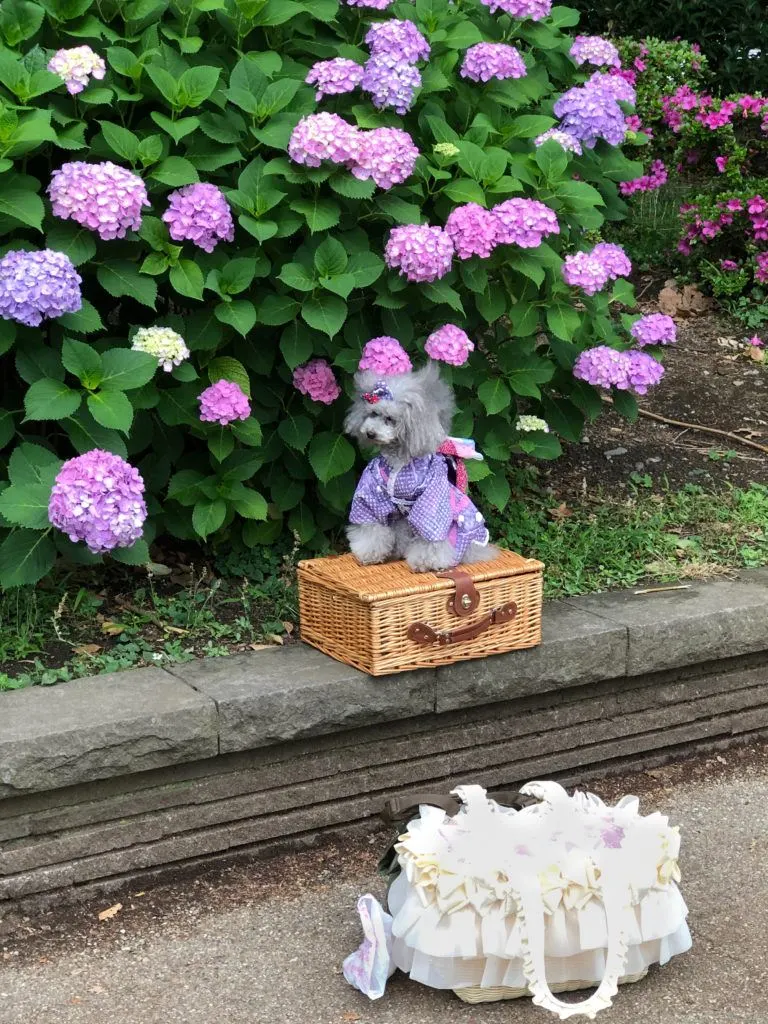
Conclusion
When planning your trip to Japan in spring, be sure to make arrangements well ahead of time since it’s the most popular time of year. Even though it is tourist high season, you can still find plenty of things to do and sights to see. You will love the spring festivals and the flower viewing, as well as all the other special things that a Japanese spring has to offer.
Author Bio: Corinne Vail is a travel photographer, food lover, and a perpetual traveler who has been travel writing for over 14 years. For many years she lived overseas in Germany, Japan, Turkey, South Korea, and the Netherlands teaching the children of the US. military. She’s visited over 90 countries, and she’s not stopping anytime soon.






